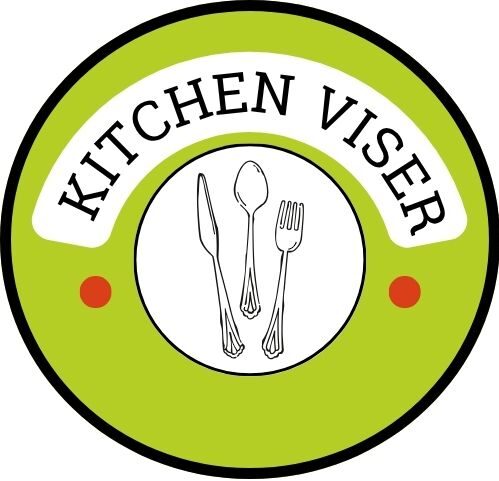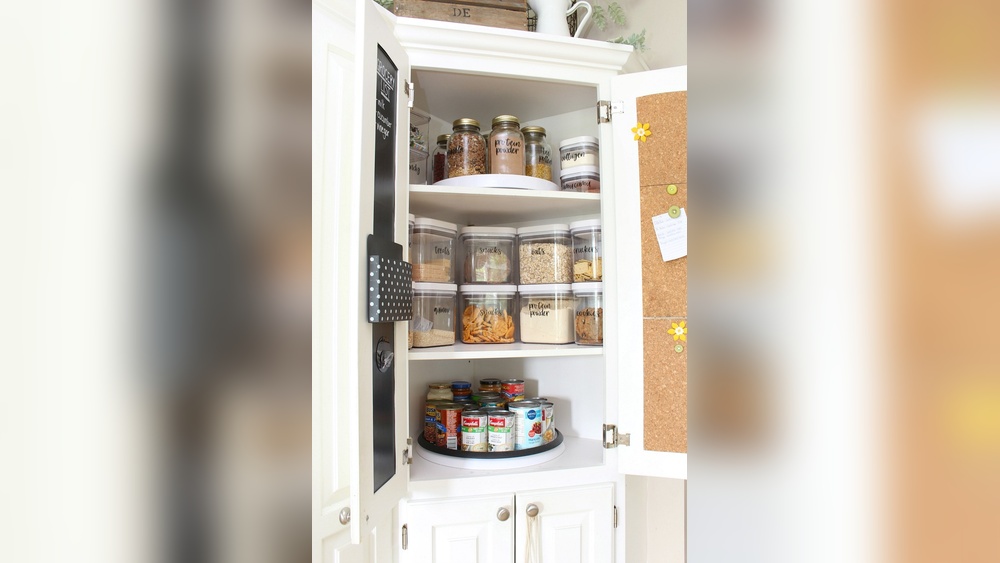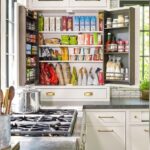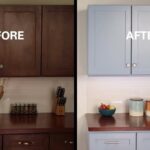Are your kitchen cabinets a jumble of mismatched items, making cooking and cleaning more stressful than it should be? Imagine opening your cabinets and instantly finding everything you need, right where you expect it.
Arranging your kitchen cabinets the smart way can save you time, reduce frustration, and even make your kitchen feel bigger and more inviting. In this guide, you’ll discover simple, practical tips to organize your cabinets by creating zones, grouping similar items, and maximizing every inch of space.
Whether you’re a cooking pro or just want a tidier kitchen, learning how to arrange your cabinets effectively will transform your daily routine. Ready to turn chaos into calm? Let’s dive in!

Create Functional Zones
Cooking zone near stove should hold pots, pans, and cooking tools. Keep these items close to the stove for quick access. This saves time while cooking and keeps the kitchen tidy.
Cleaning zone by sink is best for plates, bowls, and glasses. Store them near the dishwasher to make unloading simple and fast. This zone helps keep the kitchen organized and clean.
Food preparation area needs cutting boards, knives, and mixing bowls. Place plastic wrap, baggies, and other prep items nearby. This setup makes food prep easy and smooth.
:strip_icc()/kitchen-pantry-snacks-c2bb5c24-7b13dec53fc446c8ad1ae36763639f30.jpg)
Arrange By Frequency
Store daily use items in the most reachable cabinets. These include plates, cups, and cooking tools used every day. Keep them at eye level or just below for easy access. This helps save time and makes cooking faster.
For occasional use items, such as large pots or special baking pans, use higher or lower cabinets. These are not needed every day, so they can be stored further away. This keeps your main space clear and organized.
| Item Type | Storage Location | Examples |
|---|---|---|
| Daily Use | Front or middle cabinets | Plates, cups, cooking utensils |
| Occasional Use | Higher or lower cabinets | Large pots, baking pans, seasonal items |
Organize By Item Type
Heavy items like pots and pans go in the lower cabinets. This keeps them safe and easy to reach. Light items such as plates and glasses fit well in upper cabinets. They are easier to lift and store there.
Place appliances near where you use them most. For example, keep the toaster close to the counter space. Store the blender near the food prep zone. This saves time and keeps the kitchen tidy.
| Storage Type | Items | Placement |
|---|---|---|
| Heavy Items | Pots, pans, large appliances | Lower cabinets for easy lifting |
| Light Items | Plates, glasses, bowls | Upper cabinets for safety |
| Vertical Storage | Baking sheets, cutting boards | Use vertical dividers in cabinets |
Vertical storage helps organize thin, tall items. Use dividers to keep them upright and neat. This saves space and makes items easy to grab.
Maximize Cabinet Space
Shelf risers help create extra layers inside cabinets. They make use of tall cabinet space. Store cups or small plates on top and bigger items below. This keeps things neat and easy to find.
Vertical dividers separate trays, cutting boards, and baking sheets. They stop items from falling over. This keeps your cabinet tidy and saves time searching for things.
Cabinet door storage uses the inside of doors. Attach racks or hooks for small items like spices or lids. This frees up shelf space and keeps essentials handy.
Declutter Before Organizing
Start by removing all items from your kitchen cabinets. This helps to see everything clearly and decide what to keep. Sort items into three piles: keep, donate, and trash. Only keep what you use often or love. Old or broken items take up space and make organizing hard.
Wipe the inside of cabinets to clean dust and crumbs. Dry completely before putting anything back. This creates a fresh space for your things.
Group similar items together before placing them back. For example, keep all baking supplies in one area. This makes it easier to find what you need quickly.
Group Similar Items
Baking supplies like flour, sugar, and baking powder should be stored together. Use clear containers to keep ingredients fresh and visible. Keep measuring cups and spoons nearby for easy access during baking. Grouping these items makes baking faster and less messy.
For canned goods, create a separate section in a lower or middle cabinet. Arrange cans by type, such as vegetables, soups, or beans. Use a tiered shelf organizer to see all cans at once. This helps find items quickly and prevents buying duplicates.
Use Containers And Labels
Clear containers make it easy to see what is inside. You can quickly find items without opening every box. These containers keep your kitchen neat and help save space.
Labels tell you what is inside each container. Use simple words and big letters. This helps everyone in the family find things fast. Label items like spices, snacks, and baking supplies.
| Labeling Tips |
|---|
| Use waterproof labels that do not fade. |
| Place labels at the front for easy reading. |
| Write clearly and keep labels simple. |
| Use color-coded labels for different food groups. |
Stack And Arrange Wisely
Stack identical items together to save space and find them easily. Group plates, bowls, or cups of the same size and shape. This helps keep your cabinets tidy and quick to use.
Arrange by size to maximize space. Put taller items like jars or bottles at the back. Smaller items can go in front. This way, everything is visible and easy to reach.
| Type of Item | How to Stack | Where to Place |
|---|---|---|
| Plates | Stack by size, largest at bottom | Middle shelves for easy access |
| Bowls | Stack inside each other | Near food prep area |
| Glasses | Place upside down in rows | Close to dishwasher |
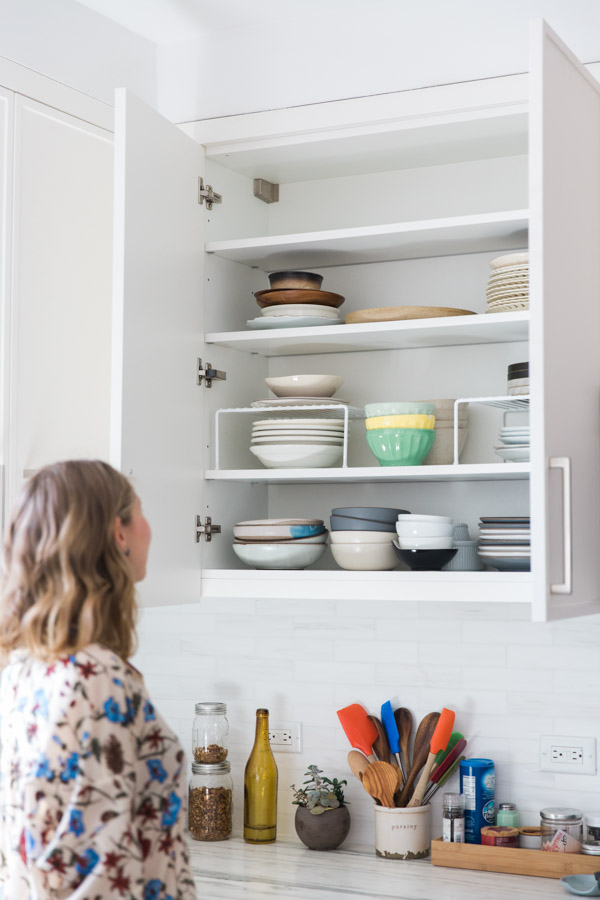
Frequently Asked Questions
How Do You Decide Where To Put Things In Kitchen Cabinets?
Organize kitchen cabinets by task zones: keep pots near the stove, plates near the dishwasher, and daily items within easy reach. Store heavy or rarely used items in lower or less accessible cabinets. Group similar items together for easy access and efficient workflow.
What Are The 9 Steps In Organizing A Kitchen Cabinet?
1. Empty all cabinets and clean thoroughly. 2. Sort items by category and frequency of use. 3. Create zones for cooking, cleaning, and food prep. 4. Store heavy items in lower cabinets. 5. Place daily-use items at eye level. 6.
Use shelf risers and organizers. 7. Utilize cabinet doors for storage. 8. Group similar items together. 9. Label shelves for easy access.
What Kitchen Cabinet Color Is Outdated?
Outdated kitchen cabinet colors include avocado green, harvest gold, and dark brown. These shades often appear old-fashioned. Bright white and soft gray remain timeless and popular choices. Avoid overly trendy or neon colors to keep your kitchen stylish longer.
How To Set Kitchen Cabinets For Beginners?
Measure your kitchen space and mark cabinet locations. Install base cabinets first, then wall cabinets. Use a level for alignment. Secure cabinets to studs and ensure proper spacing for doors and drawers. Organize items by zones: cooking, cleaning, and food prep for easy access.
Conclusion
Arranging kitchen cabinets well makes cooking easier and faster. Group items by tasks and use zones to stay organized. Keep daily items within reach and store heavy or rare items lower or further back. Place plates near the dishwasher and pots close to the stove.
Simple steps help you create a neat, functional kitchen space. Your kitchen will feel more open and less cluttered. With a clear plan, enjoy cooking and cleaning every day. Start small, and improve your kitchen cabinet setup step by step.

Yes, working as , Food Blogger and Product Reviewer for last 6 years. Here you will get amazing deals for Smart kitchen products. I am your best source for the latest update in cooking trends. I provide insightful articles, reviews, and analysis on cutting-edge kitchen gadget. My mission is to empower readers with the knowledge they need to stay ahead in a rapidly evolving coking world. Join me as we explore the future of food technology and how it shapes our lives today and tomorrow.
